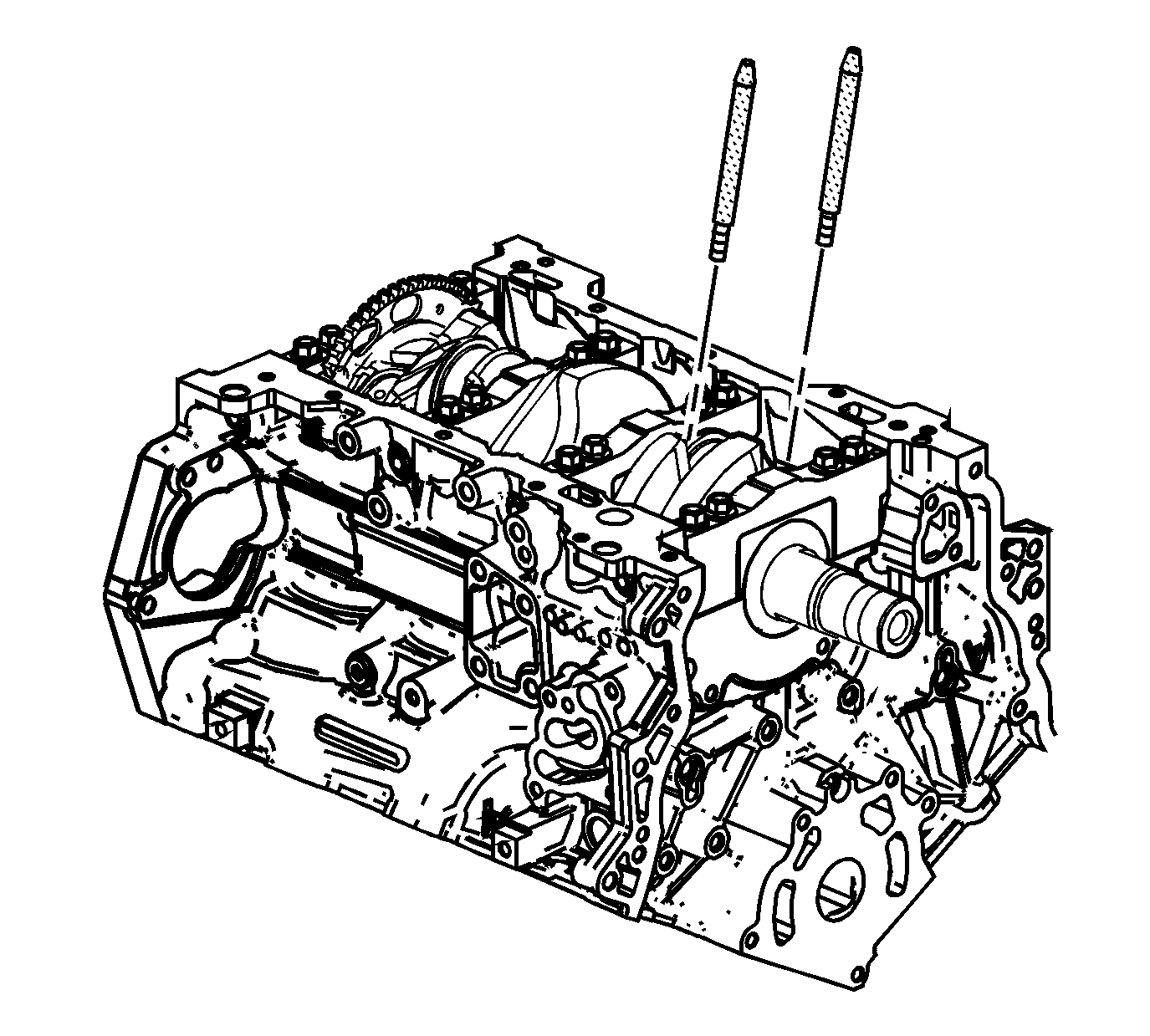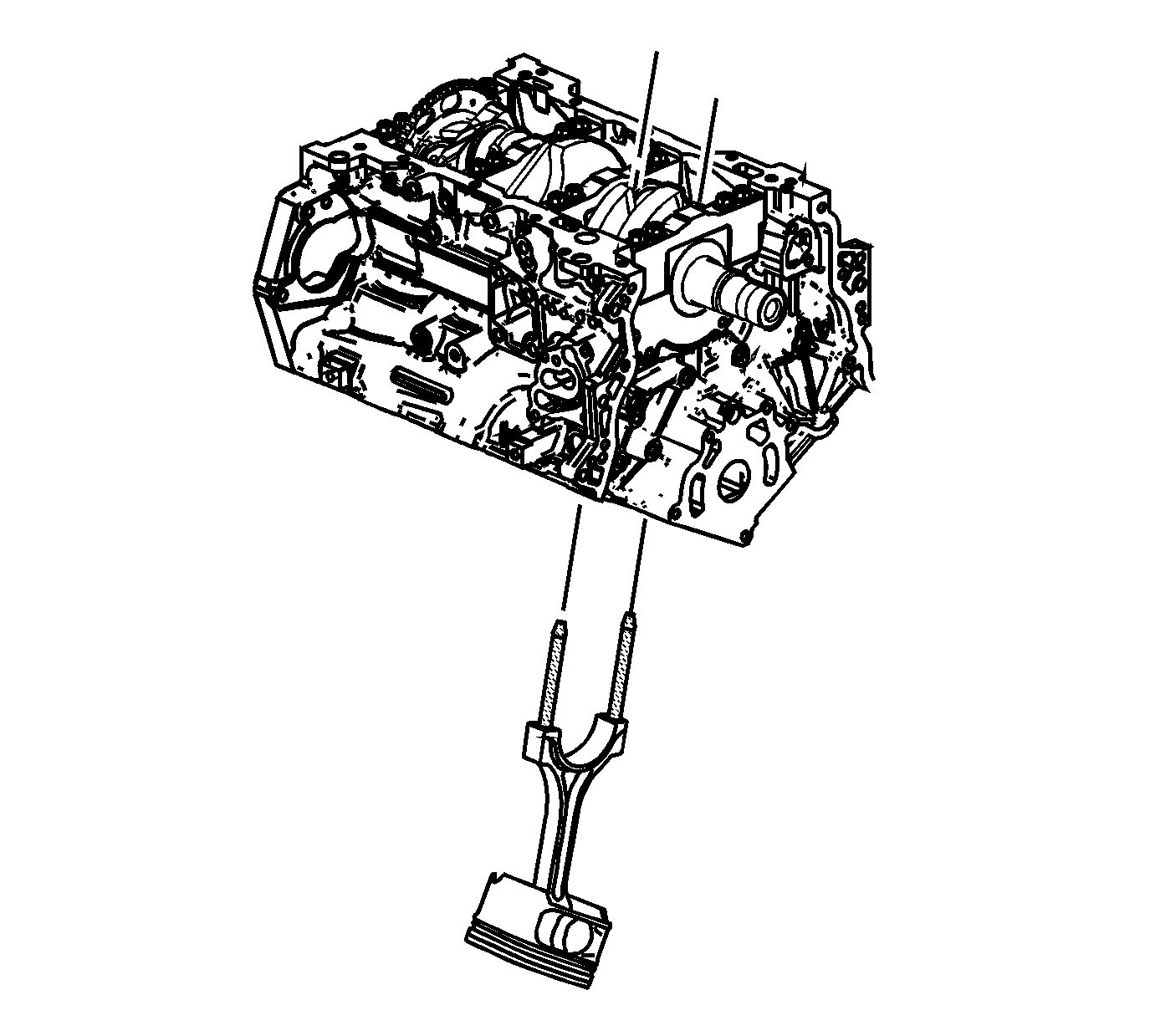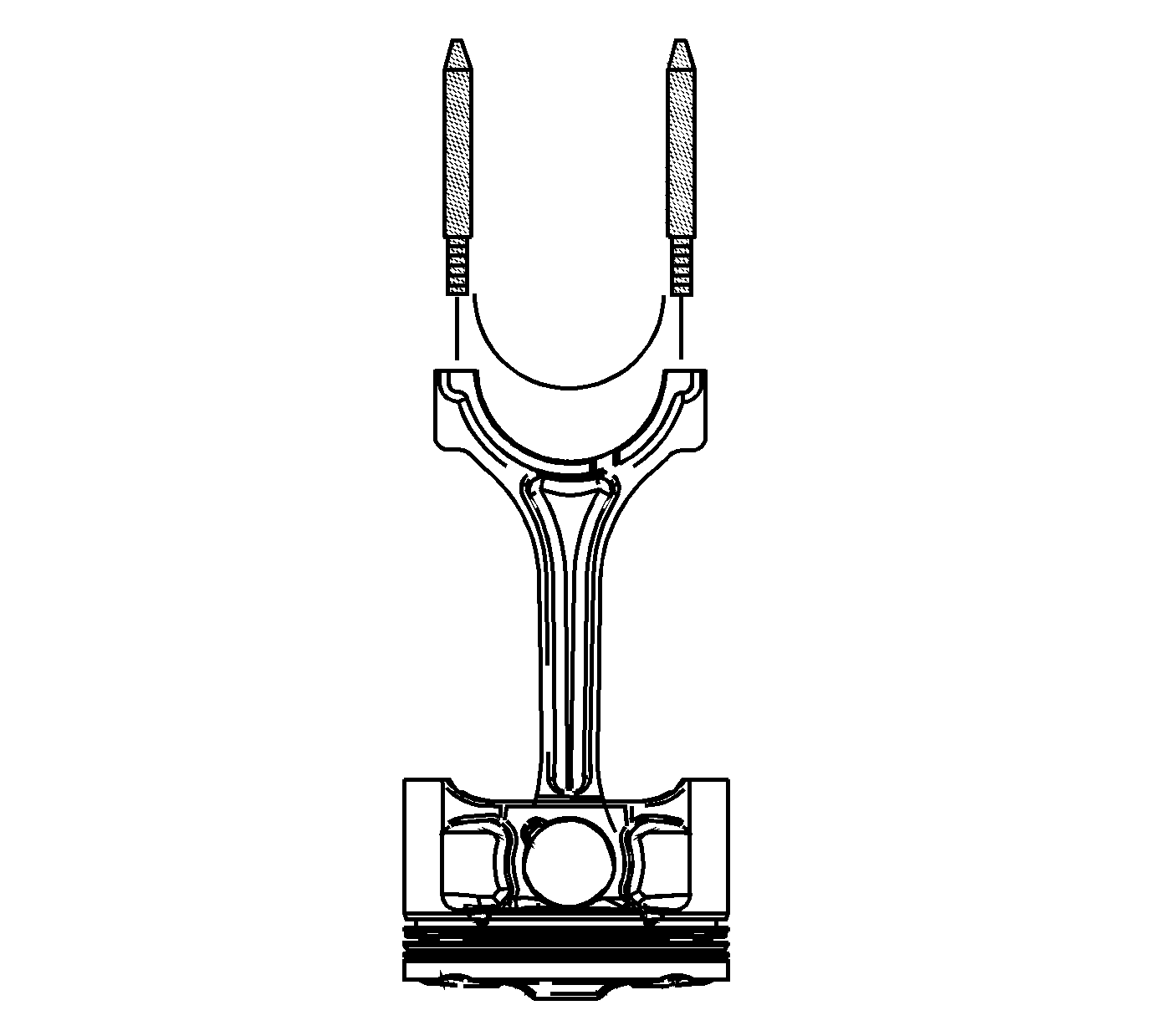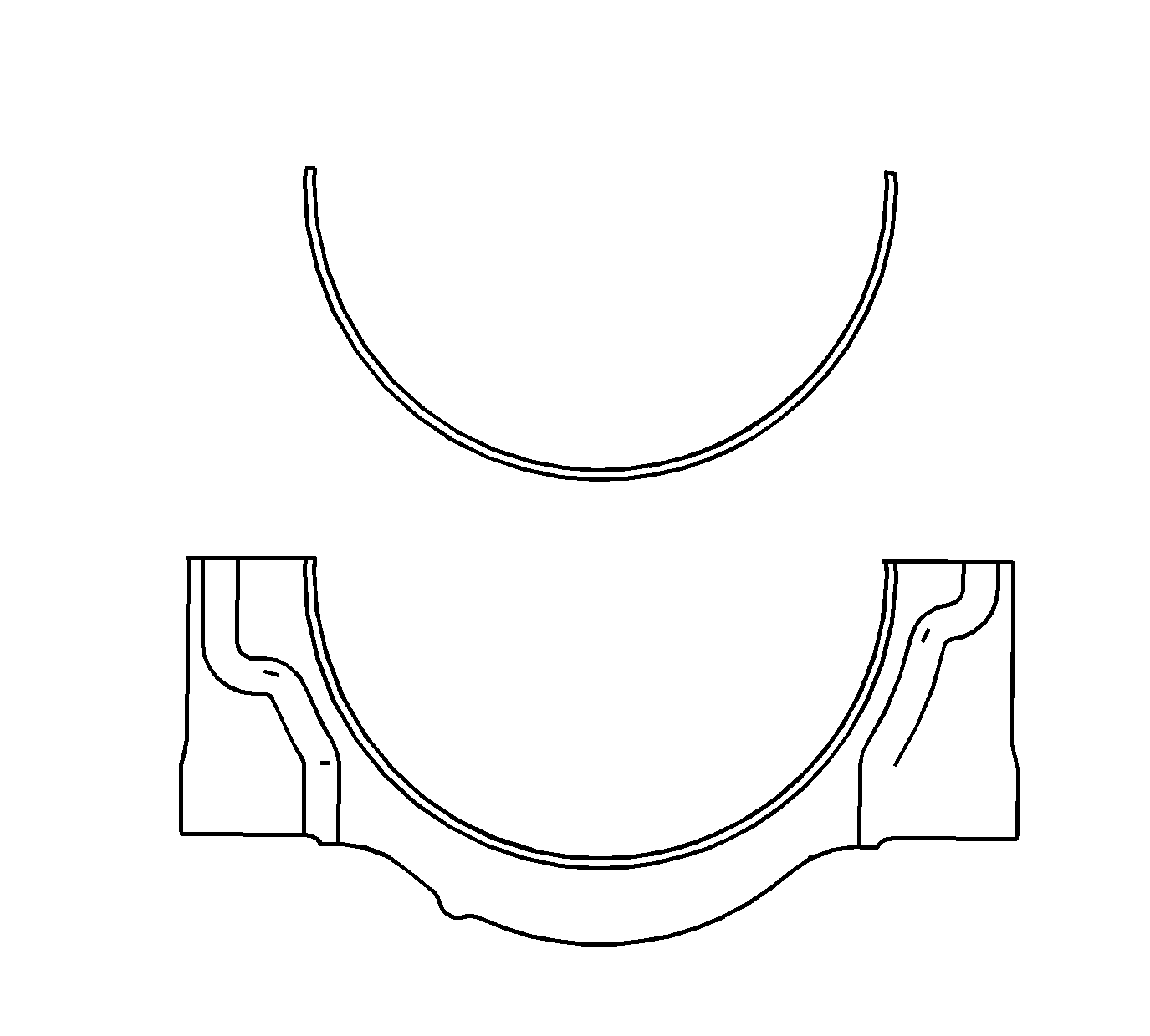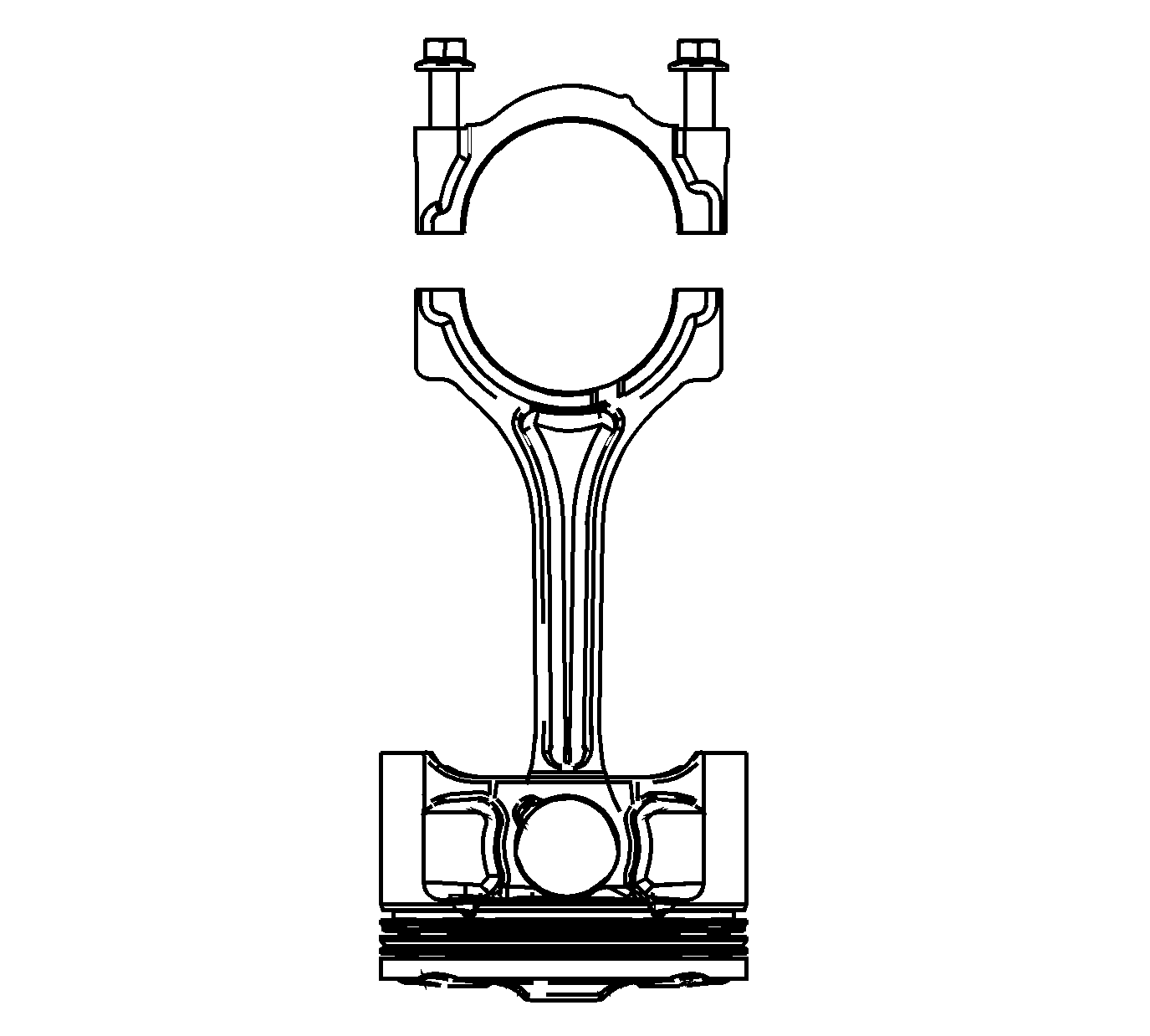Tools Required
EN 46121 Connecting Rod Guide Pin Set
- Before removing the connecting rods, check the connecting rod side clearance using the following procedure:
- Using a marker, number each piston face. Draw an arrow along the centerline of the piston pointing toward the front of the engine.
- Mark the cylinder number on the connecting rod and the connecting rod cap with a scribe, paint stick or permanent marker.
- Remove the connecting rod bolts.
- Remove the connecting rod cap.
- Install the EN 46121 into the connecting rod bolt holes.
- Using the EN 46121 , push the connecting rod and piston assembly through the top of the cylinder. DO NOT scratch the crankshaft journal or cylinder wall and DO NOT damage the oil jets when removing the connecting rod and piston assembly.
- Remove the EN 46121 from the connecting rod bolt holes.
- Remove the upper connecting rod bearing from the connecting rod.
- Remove the lower connecting rod bearing from the connecting rod cap.
- Reattach the connecting rod cap to the connecting rod to prevent damage to their mating surfaces. The cap and rod are a matched set and must be kept together.
Important: An arrow/dot showing proper piston orientation is located on the top of the piston.
Important: If the connecting rod bearings have been used in a running engine, you must replace them with NEW connecting rod bearings for reassembly.
| 1.1. | Tap the connecting rod to one end of the crankshaft journal with a dead-blow or wooden hammer. |
| 1.2. | Using feeler gages, measure the clearance between the crankshaft counterweight and the connecting rod. |
| 1.3. | The connecting rod side clearance should not exceed specifications. Refer to Engine Mechanical Specifications . |
| 1.4. | If the end play exceeds the specified limits, measure the width of the crankpin end of the connecting rod. Refer to Piston, Connecting Rod, and Bearing Cleaning and Inspection . |
| 1.5. | If the connecting rod width is significantly smaller than specified and severe wear is present on the side of the connecting rod, replace the connecting rod. |
| 1.6. | If the connecting rod width is within specification and excessive scoring is present on the crankshaft journals, replace the crankshaft. |
Notice: Do not use a stamp, punch or any other method that may distort or stress the connecting rod or connecting rod cap. Extensive engine damage may result from a connecting rod that is distorted or stressed.

Notice: Powdered metal connecting rods have rod bolts which yield when torqued. If the rod bolts are loosened or removed the rod bolts must be replaced. Rod bolts that are not replaced will not torque to the correct clamp load and can lead to serious engine damage.
Important: The connecting rod caps must remain with the original connecting rod.
